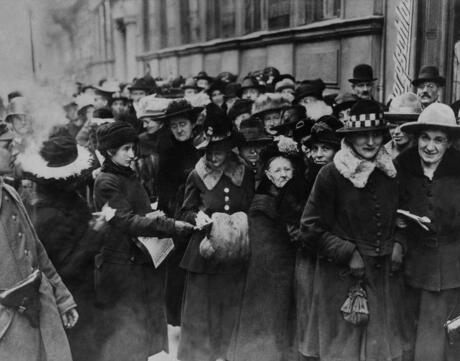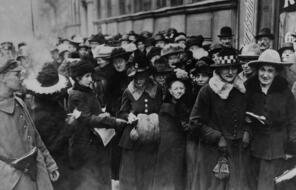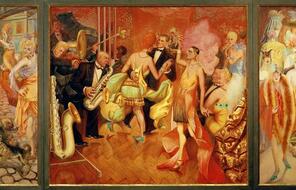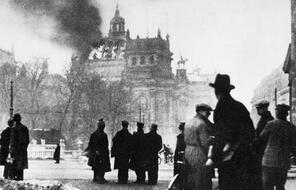The First World War would eventually involve 30 nations and 65 million soldiers. It was a war with incredible loss of human life on every battlefront and huge damage to the land wherever fighting occurred – a conflict marked by genocide, civil wars, famines, and revolutions. At the end of the war, more than nine million soldiers and more than five million civilians had been killed. As a result of the war, three European empires fell (the German, Austro-Hungarian, and Ottoman), causing panic and displacement for millions of people. The effect of the First World War on Germany and its aftermath created conditions that helped give rise to the Nazis in the years that followed.
Historian Doris Bergen writes that while the First World War did not cause Nazism or the Holocaust, its aftermath left in place fertile ground for the history that followed in at least three ways:
- The destruction and brutality of the First World War ‘seemed to many Europeans to prove that human life was cheap and expendable’.
- The trauma of the First World War created in Europeans and their leaders a ‘deep fear of ever risking another war’.
- The war’s resolution left in place across Europe lingering resentments about the war and the terms of the peace. These resentments would later prove useful to leaders such as Adolf Hitler who sought to create ‘a politics of resentment that promoted a bitter sense of humiliation’.
After the First World War ended in 1918, Kaiser Wilhelm fled to the Netherlands, and Germany became a republic, a government that is accountable to its people. The Weimar Republic was characterised by contrasts and conflicts. The new constitution granted significant new rights and freedoms to individuals and groups, beginning an era in which creativity and experimentation flourished. At the same time, the republic struggled to convince many Germans, accustomed to monarchy, to accept and trust its authority. The people’s confidence in the republic was especially damaged as the country faced economic crises as well as challenges from political parties that were hostile to democracy.
Two very different moods characterised Weimar politics and society. On the one hand, there was a sense of excitement and creativity. In the early 1920s, Germany had a new constitution that established separate branches of government, and many groups vied for political power through an electoral process. Women took on new roles in Weimar society. They constituted about a third of the German workforce after the First World War, exercised their newly acquired right to vote, and held political office for the first time. Freedom of expression in art, music, dance, and architecture flourished in Weimar culture and left a lasting legacy in the modern world.
On the other hand, many Germans felt anxious and fearful. The pace of change, especially in expanding political rights and social freedoms, made many Germans uneasy and sparked backlash against the changes. Many also feared the impact of communism, which had succeeded in Russia and threatened to spread its abolition of private wealth and property to Germany, by violence if necessary. This fear was heightened by two economic crises that tested the leadership of the Weimar government: the hyperinflation that beset the republic in its early years and the Great Depression in its final years. Parties from across the political spectrum clashed violently in the streets throughout the Weimar era, leaving citizens on edge. Meanwhile, interest in and enthusiasm for the message of ultra-conservative forces – in particular, the growing Nazi Party, with its message of racial hatred and its demand for a return to an autocratic government – continued to grow.
In his autobiography, artist George Grosz recalls how these moods shaped life in Germany during the 1920s (see also the handout The Bubbling Cauldron, mentioned in the Extensions section):
Even the capital of our new German Republic was like a bubbling cauldron. You could not see who was heating the cauldron; you could merely see it merrily bubbling, and you could feel that heat increasing. There were speakers on every street corner and songs of hatred everywhere. Everybody was hated: the Jews, the capitalists, the gentry, the communists, the military, the landlords, the workers, the unemployed … the politicians, the department stores, and again the Jews.
Learning about the Weimar Republic not only helps students understand the society in which a dictatorship ultimately took root but also serves as a lesson on the fragility of democracy. Democracy is a system of government that depends on the resilience of both its institutions and its citizens. For example, constitutional rights are solidified by a judicial system that actively protects those rights and an atmosphere in which citizens can safely express dissent. In a healthy democracy, leaders are held accountable by citizens who are critical consumers of information, especially political propaganda, and who are active participants who speak up against injustice rather than passively watching it unfold. Studying the Weimar Republic not only helps students recognise these essential ingredients of democracy; it serves as a warning for today.
















